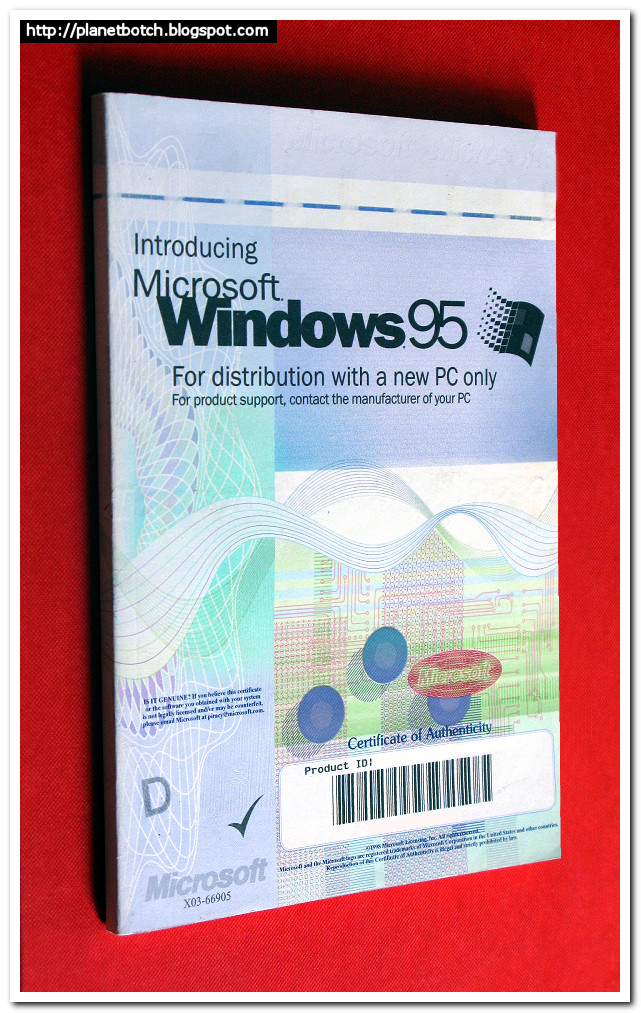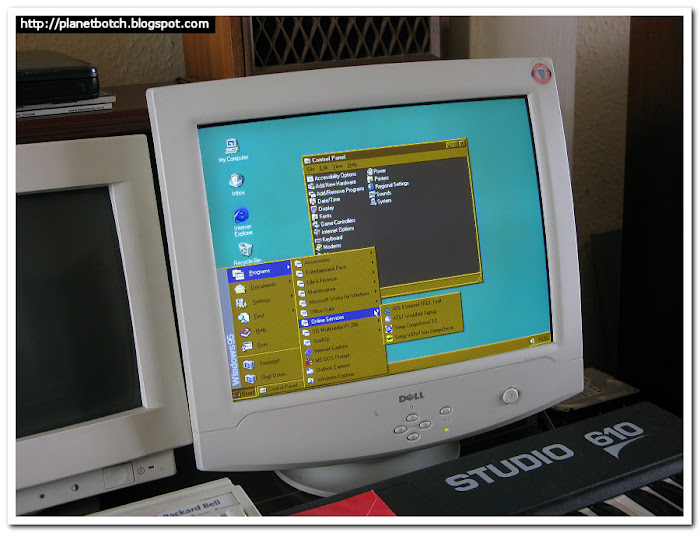The world of leisure seemed most healthy, and the introduction of a sweepingly different incarnation of Microsoft Windows fitted perfectly into the bright and progressive moment. This was not just another Windows release. It was special. People were talking about it on a grand scale. The product and its launch got serious coverage on national TV (UK), after Microsoft and a band of PC users had lauded Win 95 as a virtual revolution, and Mac devotees had contested the claims with rolling eyes and a murmur of “Like, er, what’s actually new?”

My Windows 95 manual. Might buy it a frame.
Windows had been around for almost ten years, having started life in the consumer domain back in Novermber 1985. Back then, the text-based, command-line interface MS-DOS (Microsoft Disk Operating System) was firmly established as the native PC OS. All Windows really did was act as an elaborate program, running within DOS, and providing a more welcoming graphic interface, at the expense of what many saw as unacceptable resource drain. Indeed, because PCs were so low on resources in the 1980s, it would be a good number of years before Windows was generally accepted among serious business users. The company I worked for from 1989 used the MS-DOS interface for its in-house system right through the early 1990s, and didn’t seem in any way behind the times.
But Windows 95 was the beginning of the end for MS-DOS. Before 95, DOS and Windows were separate entities, with separate installations. You couldn’t install Windows without first installing DOS, and all PCs booted to the DOS command line by default. If the user or vendor wanted to change that, they could type “WIN” into the autoexec.bat startup file, and Windows would load automatically as soon as the DOS boot was complete. But with Windows 95, DOS and Windows became one. Now, DOS no longer had to be installed in its own right – you just installed Windows 95, and the default boot went straight to the exciting new Windows Desktop.
The simplistic minimalism of the Windows 95 Desktop (pictured) was mildly disorientating after the clutter of the pervious Program Manager interface.
Well, it was exciting in 1995. Before the Desktop, Windows had employed an interface called the Program Manager. There was no Start button or popup Start Menu, and icons were arranged in groups, with no right-clicking for context menus. In fact, before Windows 3.1 (the last main release before '95), the icons had been rigidly encased in their own groups – no drag and drop. It wasn’t very flexible – little more than a means to start programs without having to type text commands really. But Windows 95 changed all that, introducing PC users for the first time to what we recognise today as the classic Windows interface.
Despite how basic and perhaps even virtually useless Windows 95 feels to some today, it seemed incredibly modern in its time. For the PC user, the new 95 interface was initially quite disorientating after Windows 3.1. I wonder how many people remember using Win 95 for the first time and seeing the little animated ‘Click here to start’ arrow which would run along the taskbar and point to the Start button after boot-up? That animation wasn’t just a gimmick. It was a measure of how much the interface had changed.
Windows 95 did in fact provide users the means to revert to the original Program Manager interface if they felt too out of sorts using the Desktop and Start Menu. But if you were going to revert to ‘Progman’, you’d be missing out on Win 95’s major selling points and defining features.

Running a late version of Windows 95 on a 1997 Apricot Pentium 166 PC (with Dell Monitor). The Start menu shows a selection of 'online service' providers of the day, including AOL and CompuServe. These commercial invitations were loaded to the Start menu on installation as part of the default Windows package.
Windows Explorer was perhaps the most impressive new feature in Win 95. In previous Windows versions, file management was, appropriately enough, handled by the File Manager – a static application showing the directories, the files, their attributes, etc. But unlike File Manager, Windows Explorer didn’t just sit in one place behind a single icon – it was a much wider and more flexible concept.
In fact, it was everywhere you went. So folders and files were no longer rooted into the File Manager’s static interface. You could drag them to the Desktop… and then open up the folders on the Desktop and drag their contents into all sorts of places. You could have, say, five randomly selected folders open at once – on the same screen, and instantly swap their contents around. Then you could open two programs, and have them both running, at the same time – whilst still dragging other files around the Desktop from folder to folder!… Today all this sounds stupidly straightforward and obvious, but before Windows 95 PC users couldn’t do it. Hand in hand with 95’s new multitasking capabilities, the Windows Explorer concept had turned a slow and cumbersome-to-navigate slog into an intuitive, fast and pleasurable experience.
And that wasn’t all. With Windows 95, users could now name their files anything they wished. Previously, filenames were limited to eight characters plus a file extension. If you wanted to call your file ‘CHEESEBURGER.GIF’, then tough. You couldn’t. You had to shorten the word, or else choose another one with eight letters or fewer. But as from Windows 95, even filenames like ‘My Survey on Eating Habits.DOC’ were easily accomodated. You need to be able to remember how limited Windows 3.1 was to really ‘get’ why 95 was such an important release.
This old selection of files in a Windows 3.1 Program Manager dialogue box is restricted to the eight character limit. Notice that my '486 PC Hard Drive' folder as stored and named in a newer version of Windows has been automatically abbreviated to '486PCH~1' by this pre-Windows 95 software, which can't accomodate its full name.
Initially, the notorious Microsoft Internet Explorer was not integrated into Windows 95, but updated versions carried IE as standard, as the huge attraction of web browsing was acknowledged. The original Windows 95 manual carried one short paragraph on browsing the web. It had no choice but to point users in the direction of third parties for the necessary software. But imagine a time in which web browsing was of that little importance! Just shows how long ago 1995 was.
Windows 95 does seem very primitive today. Because of the way Internet connections have changed and evolved in the past sixteen plus years, it’s difficult to get online with it at all in 2012. I’m able to get onto my Broadband with Win 98, but not 95, and I’m sure the situation will only worsen as more time passes.
In its day, though, Windows 95 was a marvel. True, Microsoft owed much of it to Apple – hence the famous “Windows 95 is Mac 89” slogan even being coined on TV news bulletins at the time of release. But Apple Macs were a lot more expensive than PC clones, and it could be said that there was a borderline elitist thing going on with the Macintosh. Microsoft might have been plundering Apple’s ideas, but no PC user was gonna complain about that when they were getting the Mac’s desirability at a much more affordable price. It would be wrong to praise Microsoft for the fullness of the intellectual genius behind Windows 95. But rightly or wrongly, there was a resentment towards Apple in some quarters for those heavier price tags, and Microsoft were very clever in the way they exploited that. Microsoft certainly weren't the Robin Hood of the computer world, but without them, great desktop computer systems may well have been beyond the reach of a lot more people, for a lot longer.

